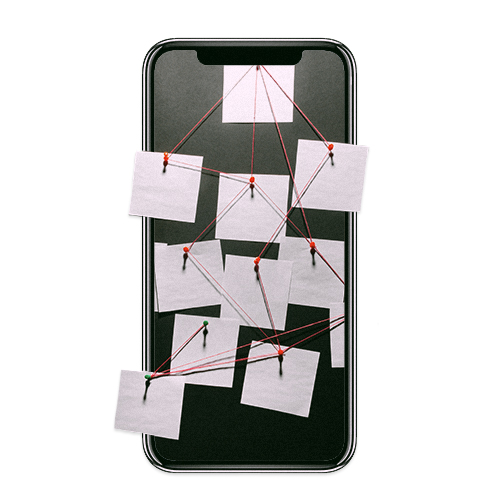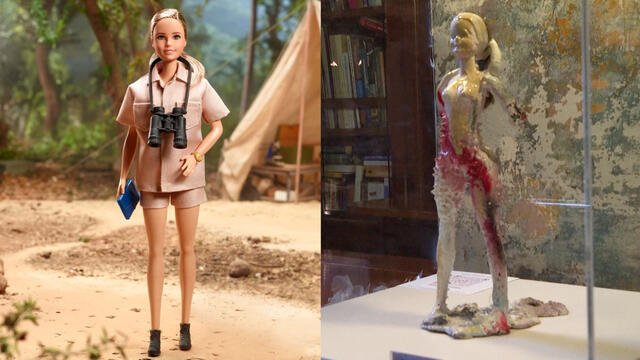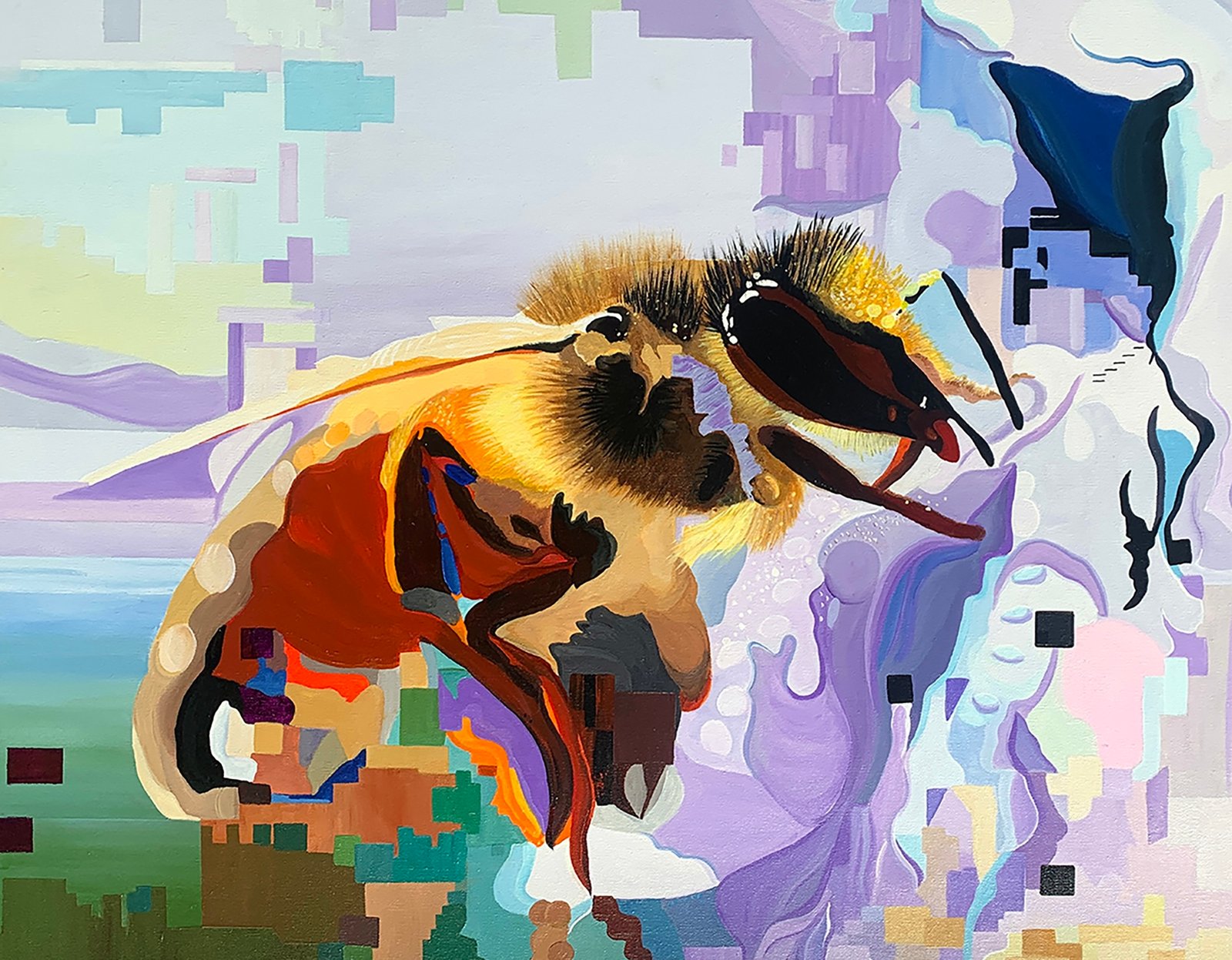Culture is a pendulum swinging back and forth between tail ends of a spectrum. If the previous decade saw conservative politics, liberalism is on the forefront; if the starlets of yesteryear were curvy, today’s will be skinny; if your closet is stocked with skinny jeans, be prepared for the takeover of the straight leg. Culture is constantly reacting to itself, swinging from one side to the opposite side, like how your parents told you to think of them as a friend growing up, so you’re going to tell your kids that you’re not their friend, you’re their mom. Like us humans, culture learns from the previous generation’s mistakes.
In the recent decade, the pendulum swung from multi-cam sitcoms to cinematic releases à la Game of Thrones and Succession; eyebrows — thin in the ’90s — got penciled in, dark, angular, popularized by beauty gurus on YouTube, and was then swapped for a feathery look; and Instagram, driven by the Gen-Z faction, reacted to the edited, picturesque photos of old by introducing the photo dump.
As a 23-year-old mostly following other 23-year-olds, my feed is composed of photo dump after photo dump. A classic formula for one goes as follows: casual but pretty photo to start; picture of a painting in a museum; a plastic bag blowing by like a tumbleweed (not trying to be poetic, trying to be stupid); blurry photo of dirty martinis mid-cheers; an irrelevant meme. Mix in some other photos that can only be ones taken by you: a drunken mirror selfie in the red light of a bar bathroom; your buddies in action, climbing a fence or playing a game of Heads Up; a 0.5, zoomed-out photo of you and your friends on a Hot Girl Coffee Walk, your arm an uncomfortably long selfie-stick, an iced oat milk latte in the other hand.
Prior to the age of the dump, Instagram spent several years being the social media site for perfection. If you at all cared about your internet presence, your grid would match an aesthetic you chose for yourself: minimalist (white and clean and uninviting) or vibrant (enhanced with the C5 VSCO filter) or something more original, probably featuring flat lays of brunches. Those are photos taken from above, for those not in the know. Unlike Snapchat and Instagram stories (which were introduced just prior to the multi-picture posts), Instagram feeds were supposed to be important, enhanced, and beautiful. This was not the space to joke with a couple of close friends, it was your ID card to the world.
In the epoch of young girls applying makeup and sharing with millions of viewers on YouTube and skater skirts reigning supreme, influencers actually capitalized on Instagram refinement. Aimee Song, who has over seven million followers on Instagram (and whose most recent post — at the time of my writing this — consists of 10 slides: beginning with a wholesome photo of her and her family in front of a hotel in Deer Valley, Utah, and includes a mirror picture where her partner’s face is blurry and no one is smiling), wrote a book called Capture Your Style: Transform Your Instagram Photos, Showcase Your Life, and Build the Ultimate Platform. The pink book — whose cover features a full-length photo of Song with her arms crossed, the very book itself worthy of an Instagram photoshoot — was published in 2016 and teaches you how to “brighten, sharpen, and filter your photos” and “how to prop and style food,” among other things. (I, of course, know so much about Capture Your Style because I got it for Christmas when I was 16, and I showcased it very proudly on my bookshelf, next to my dog-eared, marked-up copies of Catcher in the Rye and A Separate Peace.)
When the pendulum swung, it swung so far from this perfect Instagram landscape and back to the platforms that predated Instagram. Photo dumps are reminiscent of Facebook albums: a collection of pictures you post to let the world know what you’ve been up to. Photo dumps feel retro. They’re the film cameras and vinyl music of posting.
I remember when Instagram introduced the carousel feature in 2017 and everyone called it a “swipe.”
“Are you going to post a swipe?”
“Let’s take tons of photos this weekend so I can post a swipe.”
The swipe — unlike its successor, the dump — was a parade of pictures similar to a fashion week collection: cohesive, curated. The important difference between an average carousel post and a photo dump lies in the continuity of the post. For the photo dump, the messiness is integral to its identity.
Swipe was swapped for dump when not trying to be cool on the internet became cooler than trying. Of course, to come across as not trying, you must try really hard. In Hank Green’s novel An Absolutely Remarkable Thing, which explores the effects of overnight internet stardom, 23-year-old protagonist April May says, “Being annoyed by carefully crafted internet personas was part of my carefully crafted internet persona.” There is not a better motto for photo dumps.
A couple months ago, I went out for drinks with a friend at an outdoor bar, a brisk Thursday night spent sipping cider under a string of bare bulbs, as he was preparing to post. While we sat there, he added all his photos to an album, then edited each slightly on VSCO. He and I brainstormed a caption (which he has since deleted), trying to find the perfect mix of cheeky and indifferent. This post of his — which ended up starting with a phrase chalked on the sidewalk and ended with him wearing a cowboy hat, facing away from the sunset — had been painstakingly curated so as not to seem curated at all. We hashed out exactly which photos to incorporate (yes or no to selfie with a kitten?) and their order (should the silhouette of a friend looking up at a tree go before or after the video of rolling fog near the Hollywood Sign?).
In 2021, when the photo dump noticeably appeared in the social media lexicon, the world was still very much embedded in the COVID-19 crisis. For context, in the fall of 2021, my parents still hadn’t gone to a movie theater, on an airplane, or to an indoor restaurant since the beginning of 2020. Whereas before (or even now), we would have juggled a boozy brunch, a picnic at a park with friends, and a 7 p.m. birthday dinner all in one day, now we entered a new reality where the only things we could do were go on walks and watch movies. During the pandemic — especially during the stay-at-home orders — there was a lot less to post about, yet social media engagement was up 61 percent. How else to stay updated on your roommate’s lab partner from Florida in the time of COVID than to follow his every move on Instagram?

The need to stay connected over the internet was never higher, yet there was even less to say. People weren’t getting dressed, seeing friends, or leaving their houses. When I look back at my camera roll from 2020, all I see are pictures of my Bob Ross recreations, a few screenshots of results from Buzzfeed quizzes, and photos of my dog. None of these things I posted to the ’gram. Yet, if I had waited a year or two or three, a photo of “You got: Connel’s chain” from the “Which Normal People character are you?” quiz would have made the perfect photo dump conclusion.
With nothing but sunsets and selfies to post, users were forced to create a collage of a simple life to remind others that they still existed (like when I posted an array of funhouse mirror pics taken on Photo Booth over the last couple of years or a mid-sip selfie paired with my backyard set-up). Instagram — which had previously operated as a livestream, people posting their photos up to a day after they were taken — became a scrapbook, dumps showcasing a photo from two months ago next to a photo taken last week.
The dump has staying power. It has been nearly four years since the onset of the pandemic and three since vaccines were introduced. I regularly meet up with friends at a crowded bar, I work in person five days a week, I recently traveled 10 hours on a plane, all things that had seemed unreachable just a few years ago. Yet, the dump is still here. The pandemic may have been a ripe breeding ground for the dump to grow, but what it has to offer allows it to stay.
In our post-isolation environment, the photo dump allows you to stay connected but feel liberated from the pressure of posting the perfect photo. The whole point is to showcase imperfection. It reflects the pendulum swing from obvious curation and pristine scenes to authenticity and behind-the-scenes. Either the dump inspired this shift, or the shift inspired the dump, but it’s hard to know for certain. The chicken and the egg.
One of the best qualities of the dump is its ability to hide what you’re showcasing — a photo of me singing Robin Thicke’s controversial song “Blurred Lines” at a karaoke bar was strategically uploaded later in my dump, after a photo of my head on my friend’s shoulder. In another post, a picture of me with a doodled-on soul patch and my hair in a bald cap cosplaying Pitbull is behind more than one picture where I look good. I want people to see these — that’s why I posted them! — but only after getting a greater sense of who I really am — or what I really look like. This is why the first photo in the carousel is still expected to be cute and not weird, because it’s what shows up on your profile’s grid, it’s all your followers will see if they don’t decide to swipe. And most of us — besides some of the really hardcore girls committed to the grunge, posting badly-lit landscape photos and pictures of cleaning supplies — maybe even them — do care what our social media accounts say about us. Which is why we’re presenting ourselves as uncaring, so carefully.•
Source images courtesy of pabijan, Marina Ignatova, breakermaximus, and smile3337 via stock.adobe.com.






